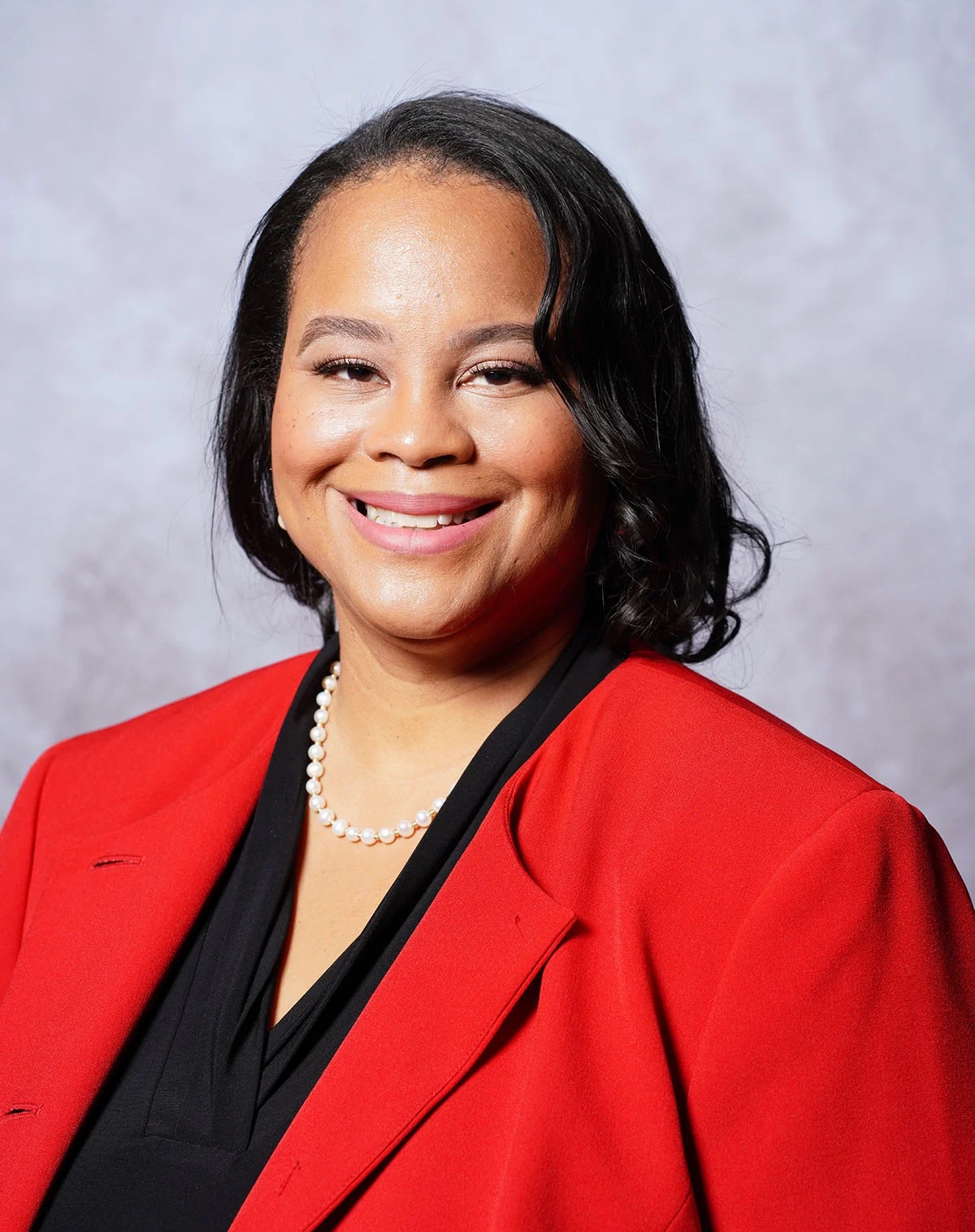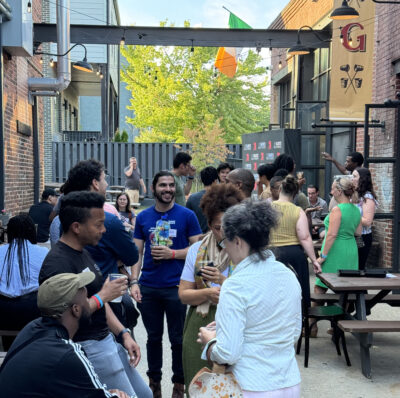After starting as the University of Michigan’s president in 1996, he was named in two Supreme Court cases — Grutter v. Bollinger and Gratz v. Bollinger — targeting the institution’s race-conscious admissions policies. Those historic lawsuits led to him becoming a prominent affirmative action supporter, and he defends the practice in his new book with Geoffrey R. Stone, “A Legacy of Discrimination: The Essential Constitutionality of Affirmative Action.”
“Higher education is one institution, one sector of society, among many that have tried to create a fairer, more just society and overcome the invidious discrimination of slavery and Jim Crow and policies that disadvantaged African Americans,” Bollinger told The 19th. Affirmative action has “been very important, very beneficial for society.”
Bollinger, Columbia University’s outgoing president, is one of many higher education leaders voicing support for affirmative action as the Supreme Court issued a consolidated decision Thursday in two cases — Students for Fair Admissions Inc. v. University of North Carolina and Students for Fair Admissions Inc. v. President & Fellows of Harvard College — that it is unconstitutional, reversing four decades of legal precedent.
Danielle Holley, outgoing dean of Howard University School of Law and incoming president of Mount Holyoke College, is also adamant that the Supreme Court decision will erode long-fought efforts to foster diversity on campuses.
“It’s very similar in some ways to the abortion decision last summer in which the Supreme Court essentially revolutionized our society in one fell swoop,” Holley said. “The Supreme Court wants a version of the United States in which we ignore people’s life history, what they bring to the table in terms of their ability to go back to their communities and improve those communities, what it means to have differing voices and different backgrounds on campus. It is a true step back for our country.”
Black, Latina and Native American women, who outnumber men of their race on college campuses, could largely disappear from elite academic institutions in a post-affirmative action America, Holley predicts. And alternatives to race-based admissions, such as income-based policies, may not achieve racial diversity in higher education as effectively.
“Race-neutral policies won’t fix issues that have plagued the country based on race,” said Jessica Giles, executive director of the Washington, D.C., chapter of Democrats for Education Reform (DFER). “We’re still feeling the impact of slavery, of Jim Crow, and we’re seeing it in just about every outcome that there is, so we need affirmative action.”
Perceptions of affirmative action — both in the courts and in the public — have evolved since the government established the practice during the civil rights struggle. But supporters say the policy has served one focus in higher education: diversify institutions that have traditionally excluded women, people of color and other groups.
###
“It’s just doing things; it’s acting.”
That’s affirmative action in a nutshell, Bollinger said. “It’s not just saying we believe in equality and then waiting to see what happens,” he added. “It’s taking steps to try to achieve equality, and in the case of universities, taking a step was [acknowledging] that we needed to take race into account in admissions to make sure that people of color who are disadvantaged are also included in our student bodies and have the benefits of what selective universities can bring to them.”
But public sentiment on diversity in education has shifted since the 1954 case Brown v. Board of Education, in which the Supreme Court ruled that “separate but equal” schools were unconstitutional. The Brown ruling, Bollinger said, “set off … a wider debate about discrimination in America, and we had the Civil Rights Act and the Voting Rights Act and lots of questions about how to overcome discrimination, how to achieve integration.”
More than a decade after Brown, selective universities included few Black American students but faced legal pushback when they took affirmative action to address racial disparities. A White man, Allan Bakke, who was rejected twice from the medical school at the University of California, Davis, sued the institution for reserving 16 out of 100 admissions slots for underrepresented students. In 1978, a split Supreme Court decided in Regents of the University of California v. Bakke that racial quotas violate the 14th Amendment’s equal protection clause, but race could be one of many admissions criteria.
Afterward, Bollinger said, universities could not justify using affirmative action to counter centuries of discrimination. “You just couldn’t talk that way anymore,” Bollinger said. “Then you come to my case, the Grutter case, and, for the first time, a majority of the Supreme Court clearly upheld you could take race into account — again, not for overcoming discrimination, not for racial justice, but for the educational benefits of diversity.”
###
Decided in 2003, Grutter v. Bollinger asked the high court to consider if the University of Michigan Law School’s racial preferences in admissions violated the 14th Amendment or the 1964 Civil Rights Act. Because the law school evaluated applicants in a highly individualized manner, the court said, the program did “not unduly harm nonminority applicants.”
In the related case, Gratz v. Bollinger — in which two students questioned whether the policy of the University of Michigan’s Office of Undergraduate Admissions was constitutional — the Supreme Court ruled against the institution for not assessing applicants in an individualized manner but admitting most prospects from “underrepresented” groups.
Bollinger, a constitutional law scholar, defended affirmative action as University of Michigan’s president. “It wasn’t my intention to be a big advocate for diversity and affirmative action and civil rights,” he recalled. “I believed in it, but it’s not like that was my mission in life. But when you’re drawn into a lawsuit of that magnitude and you have responsibilities, it became a mission of my life.”
At the turn of the millennium, affirmative action was not a popular concept, Bollinger said. California banned the practice in 1996 and eight states followed.
“It was not easy to get the kind of support that we needed to win,” Bollinger said. “But I felt that it was clearly worth fighting all the way to the Supreme Court and really giving it everything we had, and we won. Now to see it overturned and reversed is just tragic.”
###
Affirmative action has not only helped Black, Latino and Indigenous students excel in higher education but also Asian Americans and women of all races. No woman would sit on the Supreme Court without it, Holley said.
“Justice [Amy Coney] Barrett … would have never gone to some of the schools that she went to because of her gender without affirmative action,” Holley said. Barrett earned her law degree in 1997 from the University of Notre Dame, which did not accept women into its law school until 1969.
“Some of the biggest beneficiaries of affirmative action over time in the workplace and in education are White women,” Holley said. “The truth is any … minority student who has attended a university since 1964 has benefited from affirmative action. Before the Civil Rights Act, discrimination was widespread; you could not attend many of these colleges and universities if you were not White and if you were not male.”

Mount Holyoke College President Danielle Holley. (Photo courtesy of Howard University/The 19th*)
Although all minority groups historically encountered discrimination, Students for Fair Admissions (SFFA) successfully argued that today affirmative action hurts Asian Americans. Supporters of race-conscious admissions have described this claim as a cynical ploy to pit Asian Americans against their Black and Brown counterparts and distract from the fact that the plaintiffs in previous Supreme Court affirmative action cases have all been White.
Asian Americans he’s spoken with “think it’s very awkward that they are being inserted into the middle of this narrative,” said Allen Koh, CEO of Cardinal Education, a Silicon Valley-based company that helps students navigate the college admissions process. Koh is Asian American. “There’s a plethora of opinions out there, but I think, universally, there’s a lot of discomfort at being in the middle of it because it wasn’t an Asian-American group that filed these lawsuits to begin with.”
Fifty-three percent of Asian Americans familiar with affirmative action “say it is a good thing,” according to a new poll from the Pew Research Center. Nineteen percent “say it is a bad thing,” and 27% “say they don’t know whether affirmative action is good or bad.” But the poll also found that 76% of Asian adults “say race or ethnicity should not factor into college admissions decisions.”
Koh said that race is one of many factors that universities consider during admissions. “So, people shouldn’t think of it as, ‘Affirmative action is taking a spot away from me.’ … An affluent Caucasian kid isn’t actually competing against a scholarship kid whose parents are immigrants. Sometimes people get very passionate about who they perceive to be their fellow competitors, but they’re not actually. … Students are always evaluated based on what is known as the local context. How did you leverage the resources you had access to?”
SFFA claimed originally that Harvard discriminated against Asian Americans by limiting their enrollment numbers, but when the group couldn’t prove that, their “next strategy was to attack affirmative action for African Americans with the claim that Asian Americans will have greater opportunities if that practice ends,” Bollinger said. That marked “a very unfortunate turn in the litigation.”
###
Now that race-conscious policies have been ruled unconstitutional, will colleges eliminate other kinds of admissions preferences? That’s a question affirmative action supporters want answered.
Forty-three percent of Harvard’s White students “had some special status — legacy status, [related to] faculty and staff, athlete status,” Holley said. “They had some special status beyond their credentials of GPA and standardized test scores, so I think one of the biggest questions of this case is will it overturn the way that we see admissions in general?”
Giles, of DFER DC, wants to see legacy admissions prohibited, as she contends they advantage already privileged students. “Giving children of alumni a preference over a student who is the first person in their family to go to college is wrong,” she said. “We know that college is designed to help people to climb up the social ladder, to have social mobility and be able to take care of their families. Colleges and universities continue to say that diversity is an aim, but then they have this 100-year-old policy that is counter to those efforts.”
A Washington Post poll of 1,238 American adults published in October found that 75% of respondents believe legacy admissions are inappropriate. Yet, Giles said, many people don’t know they exist. Black people are less familiar with them than White Americans, indicating how little they benefit from them. Since 2015, more than 100 colleges have ended legacy admissions, found a 2022 analysis by Education Reform Now, a nonprofit advocacy group. If legacy admissions aren’t prohibited, Giles said, they could make it even harder for underrepresented students to enter prestigious universities.
“It’s going to have devastating consequences for Black and Brown students.”
###
For years, some states have tried to diversify public universities by guaranteeing admission to high school students with top 10% class rankings. Moreover, opponents of race-conscious admissions have supported income-based affirmative action. But critics object to these alternatives.
“You’re not going to elevate your African-American student presence by taking into account only whether you come from a low-income background because of demographics and the larger number of Whites who are in the category of poverty, so it doesn’t work as a way of increasing your African-American population,” Bollinger said. “I think the idea of a 10% solution — it worked for Texas in terms of getting a better critical mass of African Americans. But the fact is it’s based on a very problematic reality of segregation in your K-12 schools.”
Accepting the top 10% of high school students overlooks that elite public universities such as the University of Michigan attract many out-of-state students, making it challenging to base admissions largely on in-state applicants, Bollinger said. A 10% solution simply isn’t good education policy, he added, as competitive public universities should have the same autonomy to choose students as their private counterparts. “I have never been in favor of insisting that public universities should have to choose a particular way of admitting students that they wouldn’t choose but for being prohibited from taking race into account,” he said.
Income-based admissions would not help impoverished students of color because they typically lack the credentials to compete at selective schools, Holley said. Their high schools may have offered few Advanced Placement courses or not encouraged them to take college entrance exams (though many universities no longer require the SAT).
“Often, what you’ll see is that the Black and Brown students who attend the most competitive universities like UNC or Harvard actually are not low income,” Holley said. “So socioeconomic status is not a substitute for the actual consideration of race and ethnicity.”
She expects underrepresented women to especially be impacted by affirmative action’s end.
“If they don’t disappear, they’ll be very isolated on campus,” Holley said. “We’ll go back to a time where you have six students of color in a law school class, and that is a very isolating feeling. It’s likely to drive away even the students that are accepted to schools post-affirmative action.”

This editorial article is a part of DEI Progress Month of Technical.ly’s editorial calendar.
Before you go...
Please consider supporting Technical.ly to keep our independent journalism strong. Unlike most business-focused media outlets, we don’t have a paywall. Instead, we count on your personal and organizational support.
Join our growing Slack community
Join 5,000 tech professionals and entrepreneurs in our community Slack today!





